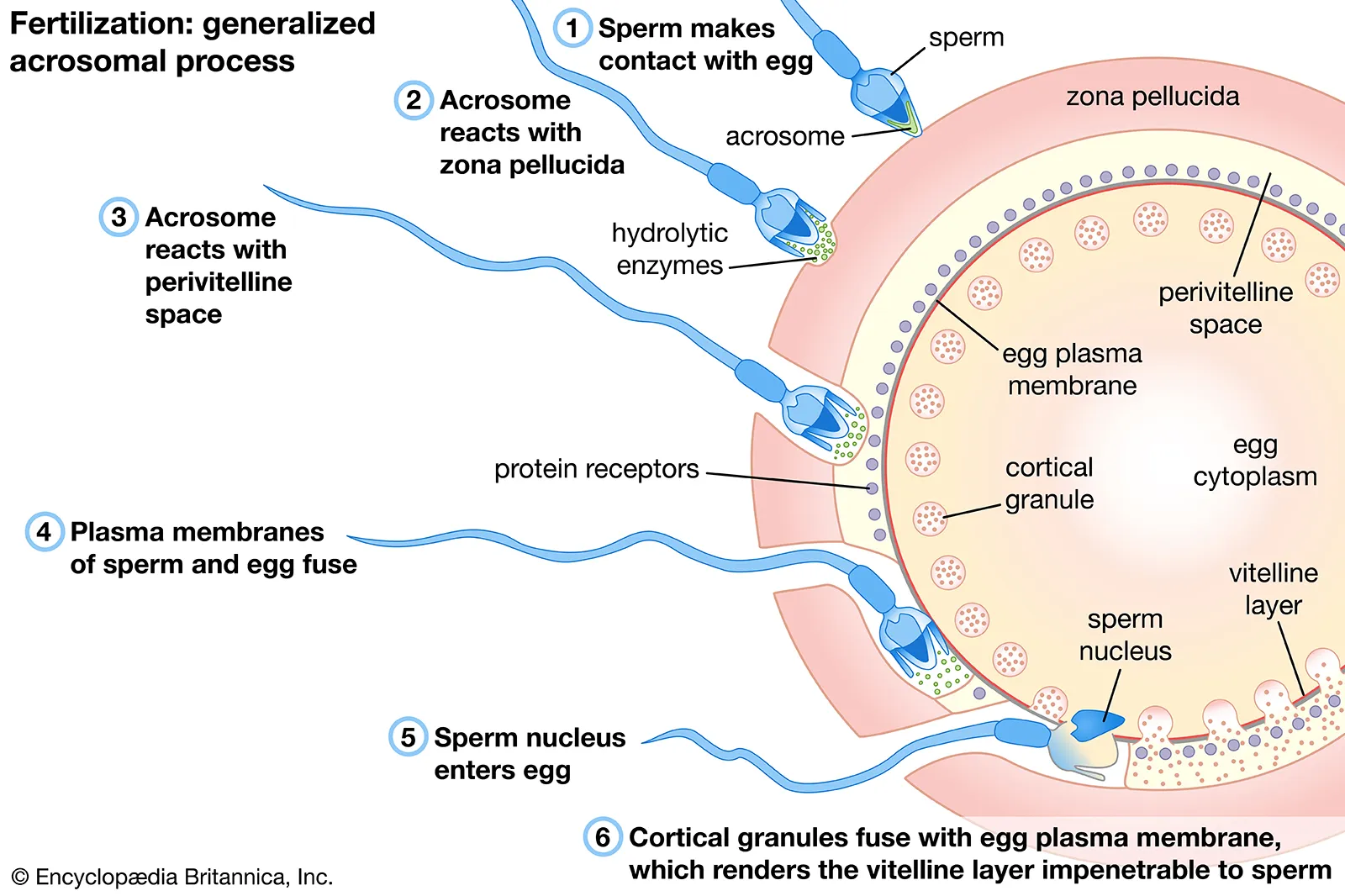Table of Contents
Introduction
- The acrosome reaction is a crucial interaction between sperm and egg jelly in marine invertebrates
- It is composed of two components: the fusion of the acrosomal vesicle with the sperm cell membrane and the extension of the acrosomal process
Activation of the Acrosome Reaction
- In sea urchins, the acrosome reaction is initiated by sulfate-containing polysaccharides in the egg jelly
- These polysaccharides bind to specific receptors located on the sperm cell membrane, directly above the acrosomal vesicle
- The receptors activate three sperm membrane proteins: a calcium transport channel, a sodium-hydrogen exchanger, and a phospholipase enzyme
- The increased calcium level triggers the fusion of the acrosomal membrane and the sperm cell membrane, releasing enzymes that create a path to the vitelline envelope
In Strongylocentrotus purpuratus
- The acrosome reaction is initiated by a repeating polymer of fucose sulfate
- This sulfated polysaccharide binds to its receptor on the sperm and activates the three sperm membrane proteins
- The elevated calcium level triggers the fusion of the acrosomal membrane with the sperm cell membrane, releasing enzymes that lyse a path through the egg jelly to the vitelline envelope
Extension of the Acrosomal Process
- The second part of the acrosome reaction involves the extension of the acrosomal process by the polymerization of globular actin molecules into actin filaments
- The influx of calcium is thought to activate the protein RhoB in the acrosomal region and midpiece of the sperm
- RhoB helps organize the actin cytoskeleton and is thought to be involved in polymerizing actin to create the acrosomal process
Barrier to Interspecies Fertilization
- The activation of the acrosome reaction serves as a barrier to interspecies fertilizations
- The sulfate-containing polysaccharides in the egg jelly are often species-specific, and egg jelly factors from one species of sea urchin generally fail to activate the acrosome reaction even in closely related species
- This is important in habitats where numerous species coexist and their spawning seasons overlap.
